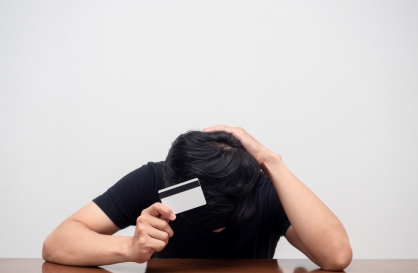The prostate is a male organ located below the bladder. It wraps around the urethra and is responsible for making the main components of semen. Prostatitis refers to inflammation of the prostate, but it is a syndrome that is diagnosed by symptoms as it does not always involve bacterial infection.
Symptoms
The symptoms of prostatitis include pain and urinary symptoms. The pain is mainly in the testicles, penis, perineum and the lower back, and can be associated with urination or ejaculation. Urinary symptoms include urgency, frequency or difficulty passing urine, and a feeling of incomplete voiding. Some patients may also experience erectile dysfunction. Many patients with these symptoms may not actually have a bacterial infection of the prostate. These symptoms are collectively referred to as “prostatitis syndrome.”

Prostatitis is a very common condition. It is the most common urological disease in men aged 50 and under, and the third most common urological condition in men over 50. According to recent statistics, approximately half of all men in the U.S. will have treatment for at least one episode of prostatitis syndrome in their lives.
Prostatitis can be characterized as either acute or chronic based on the symptoms and the duration of the disease, and bacterial or nonbacterial depending on the urine and prostatic fluid test results. Approximately 95 percent of all conditions are chronic, nonbacterial prostatitis. The exact cause of nonbacterial prostatitis is unclear. It is currently thought to be related to an increase in activity of the pelvic muscles and the perineum, increasing the pressure in the prostatic urethra. This in turn leads to backflow of urine into the prostate to cause chemical inflammation. It can also be related to viral infections, an irritable bladder, and disharmony between the neck of the bladder (made of smooth muscles), the bladder and the anal sphincter.
Treatment
If you experience the above symptoms of prostatitis, you should see a doctor for urine and prostate fluid tests to check whether there is inflammation of the prostate. The most important aspect in treating prostatitis is identifying the cause accurately. Bacterial prostatitis is treated with antibiotics. The prostatic tissue does not allow penetration of antibiotics easily, so treatment requires 1-3 months of antibiotics. For chronic nonbacterial prostatitis, the treatment is also antibiotics for the first month. Alpha-sympatholytics can effectively reduce the pressure in the prostatic urethra, and should be taken for at least six months. Anti-inflammatories and analgesic medications can also be used. Repeated prostate massages can have some effect.
More recently, new treatments such as biofeedback and pelvic muscle exercises have started being used as effective treatments. Pelvic muscle exercises can relax the pelvic muscles and the ureter sphincter that has increased activity. Other treatments such as heat treatment of the prostate and electric stimulation of pelvic muscles may be helpful in some patients. As compared to bacterial prostatitis, nonbacterial prostatitis does not carry a risk of infection, so there are no restrictions on sexual activity. In fact, regular ejaculation can improve the symptoms.
Prostatitis syndrome tends to be chronic in nature and can recur after treatment. Therefore, it is commonly thought to be untreatable, which is why some people receive unproven treatments and suffer from complications. However, an accurate evaluation is important to rule out other causes of similar symptoms. And if the cause is identified, most people can experience satisfactory responses with advancement of treatment modalities.
Symptoms
The symptoms of prostatitis include pain and urinary symptoms. The pain is mainly in the testicles, penis, perineum and the lower back, and can be associated with urination or ejaculation. Urinary symptoms include urgency, frequency or difficulty passing urine, and a feeling of incomplete voiding. Some patients may also experience erectile dysfunction. Many patients with these symptoms may not actually have a bacterial infection of the prostate. These symptoms are collectively referred to as “prostatitis syndrome.”

Prostatitis is a very common condition. It is the most common urological disease in men aged 50 and under, and the third most common urological condition in men over 50. According to recent statistics, approximately half of all men in the U.S. will have treatment for at least one episode of prostatitis syndrome in their lives.
Prostatitis can be characterized as either acute or chronic based on the symptoms and the duration of the disease, and bacterial or nonbacterial depending on the urine and prostatic fluid test results. Approximately 95 percent of all conditions are chronic, nonbacterial prostatitis. The exact cause of nonbacterial prostatitis is unclear. It is currently thought to be related to an increase in activity of the pelvic muscles and the perineum, increasing the pressure in the prostatic urethra. This in turn leads to backflow of urine into the prostate to cause chemical inflammation. It can also be related to viral infections, an irritable bladder, and disharmony between the neck of the bladder (made of smooth muscles), the bladder and the anal sphincter.
Treatment
If you experience the above symptoms of prostatitis, you should see a doctor for urine and prostate fluid tests to check whether there is inflammation of the prostate. The most important aspect in treating prostatitis is identifying the cause accurately. Bacterial prostatitis is treated with antibiotics. The prostatic tissue does not allow penetration of antibiotics easily, so treatment requires 1-3 months of antibiotics. For chronic nonbacterial prostatitis, the treatment is also antibiotics for the first month. Alpha-sympatholytics can effectively reduce the pressure in the prostatic urethra, and should be taken for at least six months. Anti-inflammatories and analgesic medications can also be used. Repeated prostate massages can have some effect.
More recently, new treatments such as biofeedback and pelvic muscle exercises have started being used as effective treatments. Pelvic muscle exercises can relax the pelvic muscles and the ureter sphincter that has increased activity. Other treatments such as heat treatment of the prostate and electric stimulation of pelvic muscles may be helpful in some patients. As compared to bacterial prostatitis, nonbacterial prostatitis does not carry a risk of infection, so there are no restrictions on sexual activity. In fact, regular ejaculation can improve the symptoms.
Prostatitis syndrome tends to be chronic in nature and can recur after treatment. Therefore, it is commonly thought to be untreatable, which is why some people receive unproven treatments and suffer from complications. However, an accurate evaluation is important to rule out other causes of similar symptoms. And if the cause is identified, most people can experience satisfactory responses with advancement of treatment modalities.

By Han Deok-hyun
Han Deok-hyun is a doctor in the Department of Urology at Samsung Medical Center and a professor at Sungkyunkwan University’s School of Medicine. ― Ed.




![[Herald Interview] 'Amid aging population, Korea to invite more young professionals from overseas'](http://res.heraldm.com/phpwas/restmb_idxmake.php?idx=644&simg=/content/image/2024/04/24/20240424050844_0.jpg&u=20240424200058)











![[KH Explains] Korean shipbuilding stocks rally: Real growth or bubble?](http://res.heraldm.com/phpwas/restmb_idxmake.php?idx=652&simg=/content/image/2024/04/25/20240425050656_0.jpg&u=)

